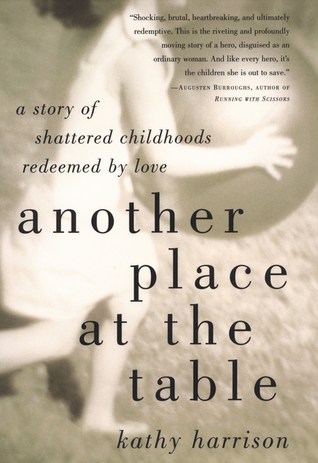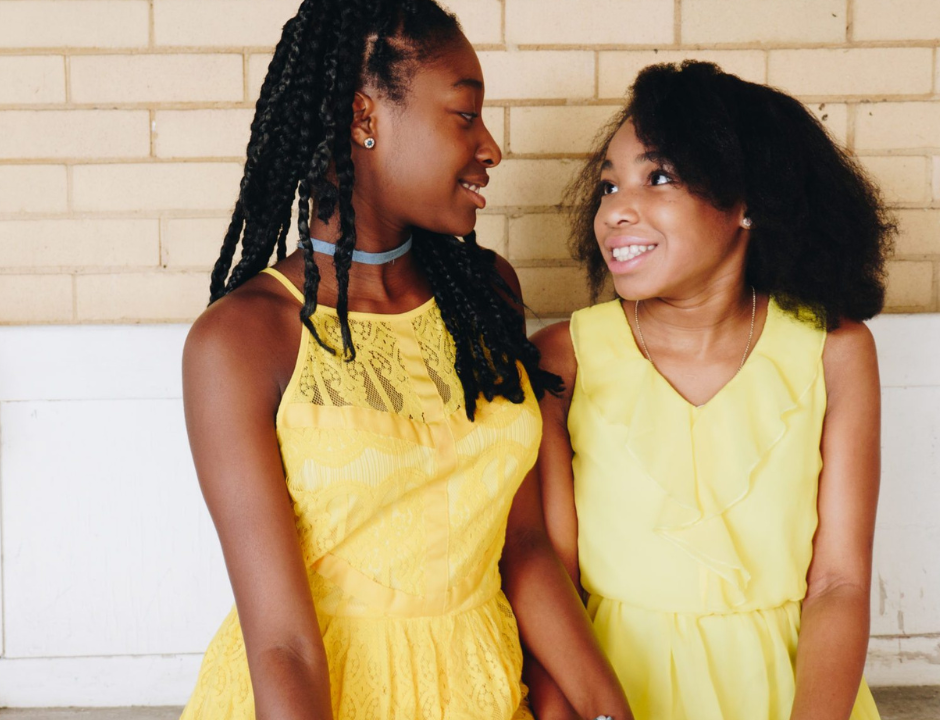
After reading Another Place at the Table by Kathy Harrison a second time and then writing my review of it, I contacted Carey, the friend who originally recommended the book to me, and challenged her to read it a second time. I wondered if her reaction to the book would change as mine did.
Carey is a stay-at-home mom who homeschools four of her five kids. She has had extensive experience in the foster care world, but she only recently became a licensed foster parent, after South Carolina changed the maximum number of children it allowed in a foster home to eight. Below is an interview in which she talks about her reactions to Another Place at the Table.
When did you first read Another Place at the Table by Kathy Harrison?
I first read this book over ten years ago.
What was your experience in foster care at the time?
At the time, I was in my mid-twenties, single with no kids, but I was interested in anything having to do with child welfare. I had a college degree in social work from a small private Christian college in Southern California. I spent a summer living in a Romanian orphanage and then back to California to work in a group home with teenage girls who were pregnant and in the foster care system. After about a year, I packed up everything I had and moved to a small studio apartment in Brooklyn, just a few blocks away from my brother and his wife. With my little experience in child welfare up until that point, I was offered a job by every child welfare agency I interviewed at in NYC. The need was great. I became a caseworker for kids in foster care. Somehow, I felt like I was made for this work.
What was your reaction to the book then?
When I first read Another Place at the Table, it wasn’t one of my favorites. I wasn’t too crazy about Kathy for some reason. I can’t put my finger on why. I do remember thinking she shouldn’t have so many special needs kids under one roof.
What has your experience with foster care been since then?
Since then, I’ve gotten married, had five kids, moved to Washington State where I continued my work as a caseworker for kids in foster care, and became a volunteer Guardian ad Litem when we moved to South Carolina. I’m also part of a Speak Up, grassroots advocacy group which helps make legislative changes to better the lives of kids in foster care. With the help of these legislative changes, we became licensed foster parents for the state of South Carolina.
We’ve had the opportunity to care for a sibling group whose mom had suddenly passed away. If we hadn’t stepped into their lives, they would’ve been separated into different foster homes. If you met these kids, you would know how traumatic that would’ve been. They were such a special, tight-knit little family of their own. Now they’re with a fictive kin “aunt” who we were able to help find for them. In talking with foster care recruiters, foster homes for siblings is one of the biggest needs across our state and probably nation.
We’ve also had the chance to care for a teenager who had been living in three different group homes for the past five years of his life due to a shortage of foster homes for teens. He was part of our family for a special season in his life, and now he is with a prospective pre-adoptive foster family. We continue to do short-term, emergency foster care for siblings.
How did this experience change your reaction when you read the book a second time?
Reading the book as a new foster parent, I had a much different experience. I found myself inspired by Kathy and wanting to underline a lot of what she was saying. I had to double underline where she said,
I am more aware of my limitations and better at respecting them. I say no to requests more often than I say yes, and I no longer agonize when I do. Every child will fit someplace, but that place isn’t always here.
That’s a tough lesson to learn. So many kids need families, but one family can’t do it all. Recognizing what we’re capable of doing but also being willing to be stretched is a balance our family is still working on.
Kathy gives such a good, honest peek into what it’s like to be a foster parent. I’ve learned a lot from her this second time around. I can see Kathy’s heart for these children much more clearly than I did the first time.
Why do you think people sometimes have negative reactions to the stories of foster parents?
We’ve all seen terrible news stories about foster parents or maybe we’ve met them, people who should never been licensed to care for kids. You question their motivation. It sticks with you. If you let it, it’ll cloud the way you see all foster parents.
How can someone who is not acquainted with the foster care system learn more?
I think some of the best ways are reading books like this one. You can also go to a monthly orientation with DSS or a foster care agency. You can volunteer at a children’s home, become a volunteer Guardian ad Litem, or just talk with other foster parents (…and if you don’t know one, you can connect with one here!). Bring a meal or find other ways to encourage a foster family in your community or church. If you’re ready and willing, go through the licensing process and start with providing short-term emergency care or respite for children in foster care.
Is there anything else you’d like to share?
I’ll never forget having to make the hard decision as a social worker to move Jenny, 9, from a foster home where she had been for almost four years. The family was going to adopt her, but my gut told me we needed to get Jenny out of there. Everyone told me I was making a huge mistake, but I knew I had to go with my gut. If you met Jenny, you’d know why. She was a shy little girl with short brown hair, big brown eyes, and a cute, gruffy voice. She stole my heart as her caseworker. Jenny’s foster mom screamed at me down the hall as I left the court house the day the judge agreed to let me remove Jenny from her home.
I called Cammy, one of my go-to favorite foster moms. I begged her to take Jenny while I sorted through things at the Jenny’s former foster home to see if my gut was right. She agreed, and I moved Jenny in with Cammy and Steve, hoping she would feel safe enough to open up and share more. I didn’t want to be right but it turned out the foster home I took Jenny from was as horrible as I thought. In the end, the state closed their foster home. Jenny stayed with Cammy and Steve. About a year ago, Jenny found me on Facebook. She had just turned 21. She said moving in with Cammy and Steve was the best thing that ever happened to her.
Just like my perspective changed when reading this book for a second time, kind people like Cammy and Steve helped change my perspective on foster parents. They helped remind me of the good, caring people who take in children who aren’t their own and do their best to love and care for them.
It’s funny, though, that I tend to remember Cammy and Steve as being the perfect foster parents. However, when I really think about it, I recall days as a caseworker when Cammy would call me, exhausted and frustrated, telling me she was going to pack up Jenny’s things and have her waiting on the front porch for me. Cammy wasn’t perfect, but what sets people like Cammy and Kathy apart from others is their willingness to turn their worlds upside down to love and care for these kids.



